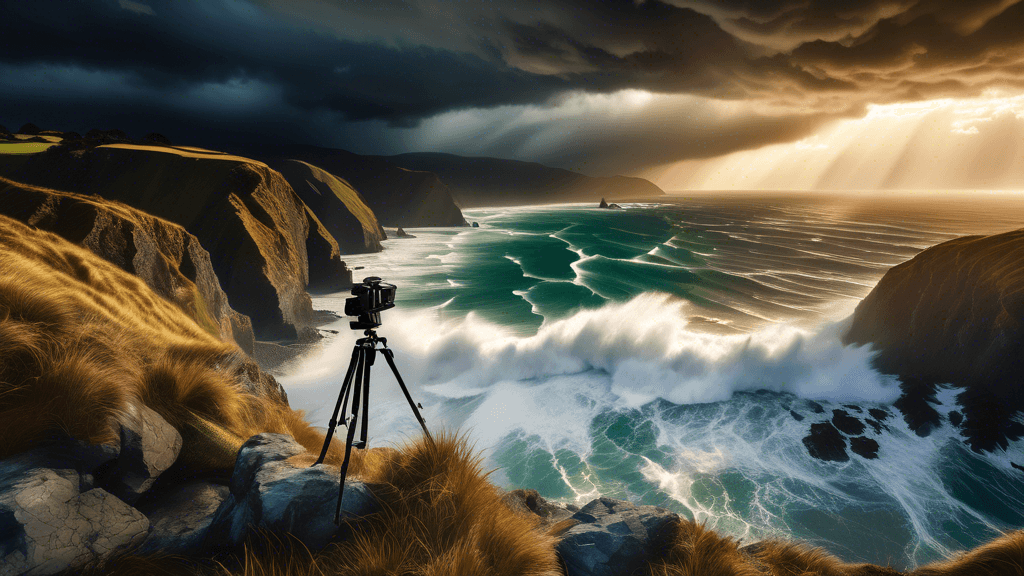
Mastering Landscape Photography: Capturing New Zealand's Ever-Changing Weather
Share
Understanding the Challenges and Rewards of New Zealand's Diverse Weather Conditions
Why is New Zealand known as one of the ultimate playgrounds for landscape photographers? Perhaps, it is because this breathtaking country presents as much of a challenge as it does beauty, particularly due to its ever-changing weather patterns. But, what makes these meteorological conditions ideal for capturing stunning landscape photographs?
The Diverse Climatic Zones of New Zealand
New Zealand's unique geographical layout, stretching over two main islands from the subtropical north down to the subantarctic south, creates a myriad of climatic conditions. Here's what landscape photographers venturing into this dynamic terrain need to know:
- Northern New Zealand: Known for its warm, humid summers and mild winters. This area offers lush green landscapes and dramatic cloud formations over coastal vistas.
- Central and Southern New Zealand: Here, photographers can find crisper temperatures with more pronounced seasonal changes. Winters are cold, bringing snow-capped mountains and frosty mornings, ideal for stark, contrast-rich images.
- Western Regions: Characterized by high rainfall, these areas boast verdant rainforests and waterfalls that are impactful subjects, particularly after rain.
- Eastern Regions: These areas are generally drier and provide clear, piercing skies that can enhance compositions with vibrant sunrises and sunsets.
Timing and Technique: Keys to Capturing New Zealand's Landscape
Given the variable weather, how can photographers prepare to capture the best shots? Here are some insights and advice from experts:
The key to mastering landscape photography in New Zealand lies in understanding the ephemeral nature of weather here. It's about embracing unpredictability and using it to your advantage, says Liam Chen, a renowned landscape photographer based in Queenstown.
Essential Gear and Settings
Equipping oneself adequately is half the battle in landscape photography. Here's what should be in your camera bag:
- Weather-resistant camera and lenses: To withstand damp and dusty conditions.
- Multiple lens options: Wide-angle lenses for expansive landscapes, and a telephoto lens for compressing distant elements like mountain ranges.
- Sturdy tripod: Essential for stability in windy conditions and for long-exposure shots capturing water motion or cloud movement.
- Graduated Neutral Density (GND) filters: To manage high contrast scenes where the sky is significantly brighter than the land.
As far as camera settings go, aperture priority mode is often suggested for landscapes to control depth of field while allowing the camera to select the shutter speed for correct exposure.
Reading Weather Patterns for Optimal Results
Understanding local weather patterns is crucial. For instance, coastal areas might present rapidly incoming sea mists that can create moody, ethereal scenes. Conversely, inland areas might offer clear, star-filled skies post-rainfall, perfect for astrophotography. Using weather apps and local advisories can significantly enhance your chances of being at the right place at the right time.
Embracing the Unpredictable
Flexibility and adaptability are perhaps the most critical traits a landscape photographer can possess, especially in New Zealand. A planned sunrise shoot might instead yield an incredible storm photograph, or an overcast day could result in a surprisingly dramatic sunbreak that lights up the landscape in a spectacular display.
For example, Anna Garcia, a celebrated environmental photographer, shares her experience: One memorable morning, I hoped to capture the calm reflections of Lake Mapourika. Instead, I found myself amidst a surreal fog scene, which turned out to be one of my most iconic shots.
Conclusion: Exploiting New Zealand's Meteorological Melodrama
New Zealand's tempestuous weather might seem daunting, but for the landscape photographer who is willing to learn its rhythms, it offers unrivaled opportunities for breathtaking photography. Facing and conquering the meteorological learning curve not only enhances your skills but also deepens your appreciation for this incredible land. Each photograph captured becomes a tribute to the unpredictable beauty of nature.
Are you ready to challenge yourself and create mesmerizing images of New Zealand's landscapes? Embrace the change, prepare thoroughly, and dive into the adventure that New Zealand weather presents to every photographer!





